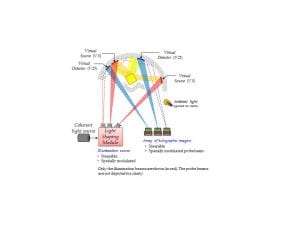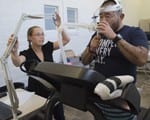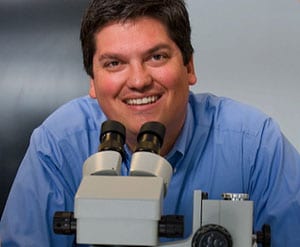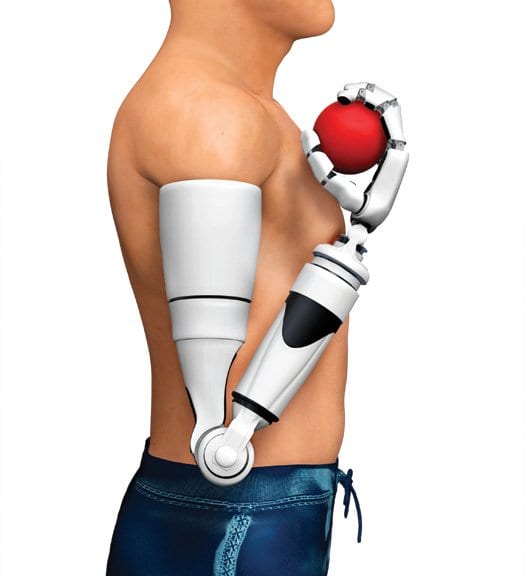“I’ve stayed close to industry to be a practicing engineer and close to academia to conduct deeper research on hard problems.” — Ronald A. Rohrer.
Legendary inventor and scholar Ronald A. Rohrer, Cecil & Ida Green Chair and Professor of Engineering in SMU’s Lyle School of Engineering, has been named to The Academy of Medicine, Engineering, and Science of Texas (TAMEST).
The nonprofit organization, founded in 2004, brings together the state’s top scientific, academic and corporate minds to support research in Texas.
The organization builds a stronger identity for Texas as an important destination and hub of achievement in these fields. Members of The National Academies of Sciences, Engineering and Medicine and the state’s nine Nobel Laureates comprise the 270 members of TAMEST. The group has 18 member institutions, including SMU, across Texas.
Rohrer joins three other distinguished SMU faculty members in TAMEST — Fred Chang, executive director of the Lyle School’s Darwin Deason Institute for Cyber Security; Delores Etter, founding director of the Lyle School’s Caruth Institute for Engineering Education and electrical engineering professor emeritus; and David Meltzer, Henderson-Morrison Chair and professor of prehistory in anthropology in Dedman College.
Considered one of the preeminent researchers in electronic design automation, Rohrer’s contributions to improving integrated circuit (IC) production have spanned over 50 years. Rohrer realized early on that circuit simulation was crucial to IC design for progress in size reduction and complexity. Among his achievements was introducing a sequence of circuit simulation courses at the University of California, Berkeley, that evolved into the SPICE (Simulation Program with Integrated Circuit Emphasis) tool, now considered the industry standard for IC design simulation. At Carnegie Mellon University, Rohrer introduced the Asymptotic Waveform Evaluation (AWE) algorithm, which enabled highly efficient timing simulations of ICs containing large numbers of parasitic elements.
“The appointment of Ron Rohrer into TAMEST will increase the visibility of Lyle’s outstanding faculty members,” said Marc P. Christensen, dean of the Lyle School of Engineering.
“Through TAMEST, Rohrer will share his vast knowledge and inspire additional collaborative research relationships with other outstanding Texas professors and universities. This will elevate SMU and the state as a leading center of scholarship and innovation,” Christensen said.
Once an SMU electrical engineering professor back in the late 70’s, Rohrer rejoined the Lyle School as a faculty member in 2017. He is professor emeritus of electrical and computer engineering at Carnegie Mellon and Rohrer’s career has included roles in academia, industrial management, venture capital, and start-up companies.
“I’ve stayed close to industry to be a practicing engineer and close to academia to conduct deeper research on hard problems,” said Rohrer.
According to Rohrer, one pressing problem is analog integrated circuit design automation, also the name of the project-based research course he’s currently teaching.
“In the analog domain, it’s hard to design a 20-transistor circuit. My goal is to make analog integrated circuit design more accessible to students and industry, especially for our local corporate partners,” he said. “I want to get the ball rolling so younger engineers can keep it moving toward a complete solution.”
Along with his membership in TAMEST and the National Academy of Engineering, Rohrer is an IEEE Life Fellow. His professional service includes several other prominent positions with IEEE, AIEE and U.S. government committees. He is the author and co-author of five textbooks and more than 100 technical papers as well as the holder of six patents. Rohrer has received 11 major awards, including the IEEE Education Medal and the NEC C&C Prize.



 NASA data leads to rare discovery: Earth’s moon wandered off axis billions of years ago
NASA data leads to rare discovery: Earth’s moon wandered off axis billions of years ago Good news! You’re likely burning more calories than you thought
Good news! You’re likely burning more calories than you thought New look at Pizarro’s conquest of Inca reveals foot soldiers were awed by empire’s grandeur
New look at Pizarro’s conquest of Inca reveals foot soldiers were awed by empire’s grandeur Charity, social justice and earth-friendly activism replace big houses, diamond rings and ostentatious living for status seekers
Charity, social justice and earth-friendly activism replace big houses, diamond rings and ostentatious living for status seekers National Center for Arts Research white paper counters findings of the Devos Institute Study on Culturally Specific Arts Organizations
National Center for Arts Research white paper counters findings of the Devos Institute Study on Culturally Specific Arts Organizations Long-term daily contact with Spanish missions triggered collapse of Native American populations in New Mexico
Long-term daily contact with Spanish missions triggered collapse of Native American populations in New Mexico North America’s newest pterosaur is a Texan — and flying reptile’s closest cousin is English
North America’s newest pterosaur is a Texan — and flying reptile’s closest cousin is English California 6th grade science books: Climate change a matter of opinion not scientific fact
California 6th grade science books: Climate change a matter of opinion not scientific fact To book a live or taped interview with Marc Christensen and Volkan Otugen in the SMU
To book a live or taped interview with Marc Christensen and Volkan Otugen in the SMU 
 SMU to help solve dangerous refugee water issues
SMU to help solve dangerous refugee water issues Anthropology researcher to study human-fire-climate interactions
Anthropology researcher to study human-fire-climate interactions


